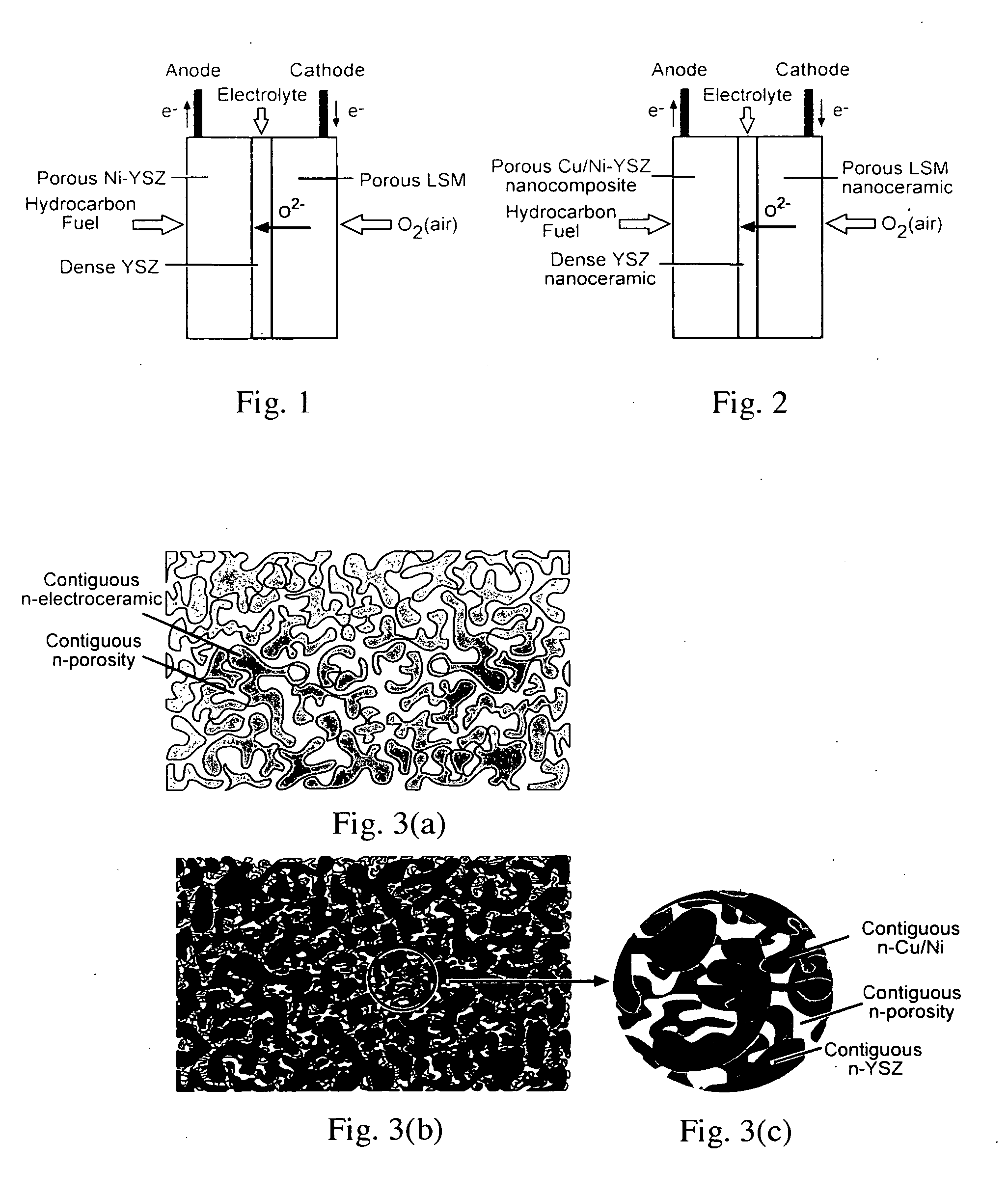Mestastable ceramic fuel cell and method of making same
a fuel cell and ceramic technology, applied in the field of plasma spray deposition of nanostructured and amorphorous ceramic coatings, can solve the problems of limited commercial use, high operating temperature, and high operating temperature of fuel cells, and achieve the effects of increasing cooling rate, high grain boundary density, and facilitating bulk diffusion
- Summary
- Abstract
- Description
- Claims
- Application Information
AI Technical Summary
Benefits of technology
Problems solved by technology
Method used
Image
Examples
example 1
Spray Deposition of YSZ-20% Al2O3 Composition
[0093] Water quenched particles have a segregated cellular structure, with tetragonal-ZrO2 rich cores and δ-Al2O3 rich interstices as seen in FIG. 17. Cooling at a higher rate by splat quenching produces a more homogeneous structure. The amount of cubic ZrO2 phase decreased with increasing deposit thickness due to reduced heat transfer, but it was still evident in a thick deposit. Following heat treatment at temperatures less than 2O3 particles in a t-ZrO2 matrix as seen in FIG. 18.
example 2
Spray Deposition of YSZ-57% Al2O3 Composition
[0094] Water quenched particles had a refined eutectic structure, consisting of a high fraction of t-ZrO2 fibers in a δ-A2O3 matrix as seen in FIG. 20. More rapidly cooled small particles displayed an even finer eutectic structure as seen in FIG. 21. Rapid cooling by splat quenching promoted retention of the amorphous state, with increased crystallinity accompanying increased thickness due to the decreased cooling rate. Decomposition of the metastable material at temperatures greater than 1200° C. generated a biphasic composite of α-Al2O3+t-ZrO2 phases.
example 3
Spray Deposition of YSZ-27% Al2O3-22% MgAl2O4v Composition
[0095] Water-quenched particles showed no visible surface features, consistent with plane-front or segregation-less solidification as seen in FIG. 21(a). X-ray diffraction analysis confirmed the presence of a t-ZrO2 extended solid solution phase. Phase decomposition by heat treatment at 1400° C. generated a triphasic nanocomposite of t-ZrO2, α-Al2O3 and spinel-MgA2O4 phases as seen in FIG. 21(b). Significant coarsening of this composite structure occurred upon heat treatment at 1600° C. as seen in FIG. 21(c).
PUM
| Property | Measurement | Unit |
|---|---|---|
| temperatures | aaaaa | aaaaa |
| size | aaaaa | aaaaa |
| particle size | aaaaa | aaaaa |
Abstract
Description
Claims
Application Information
 Login to View More
Login to View More - R&D
- Intellectual Property
- Life Sciences
- Materials
- Tech Scout
- Unparalleled Data Quality
- Higher Quality Content
- 60% Fewer Hallucinations
Browse by: Latest US Patents, China's latest patents, Technical Efficacy Thesaurus, Application Domain, Technology Topic, Popular Technical Reports.
© 2025 PatSnap. All rights reserved.Legal|Privacy policy|Modern Slavery Act Transparency Statement|Sitemap|About US| Contact US: help@patsnap.com



